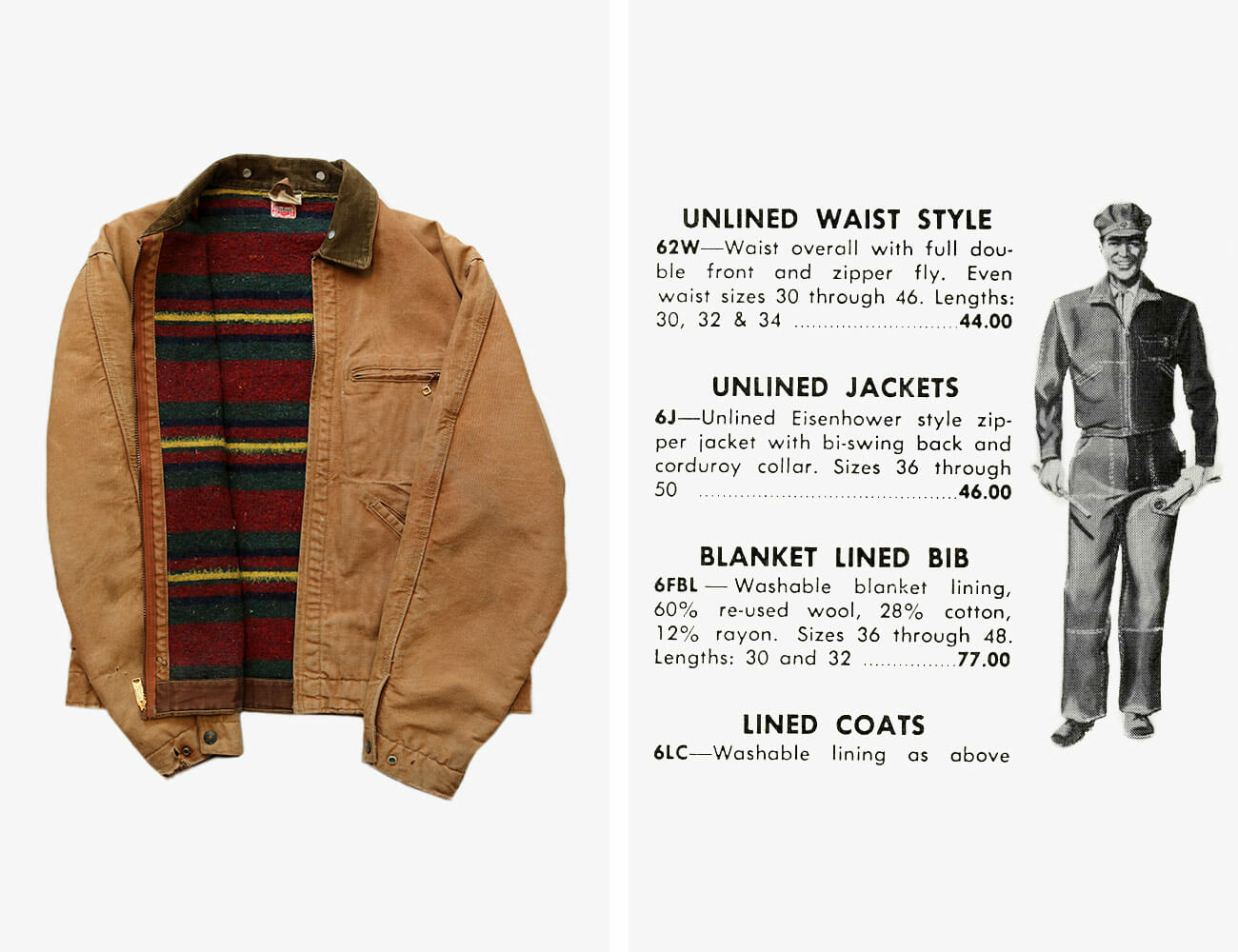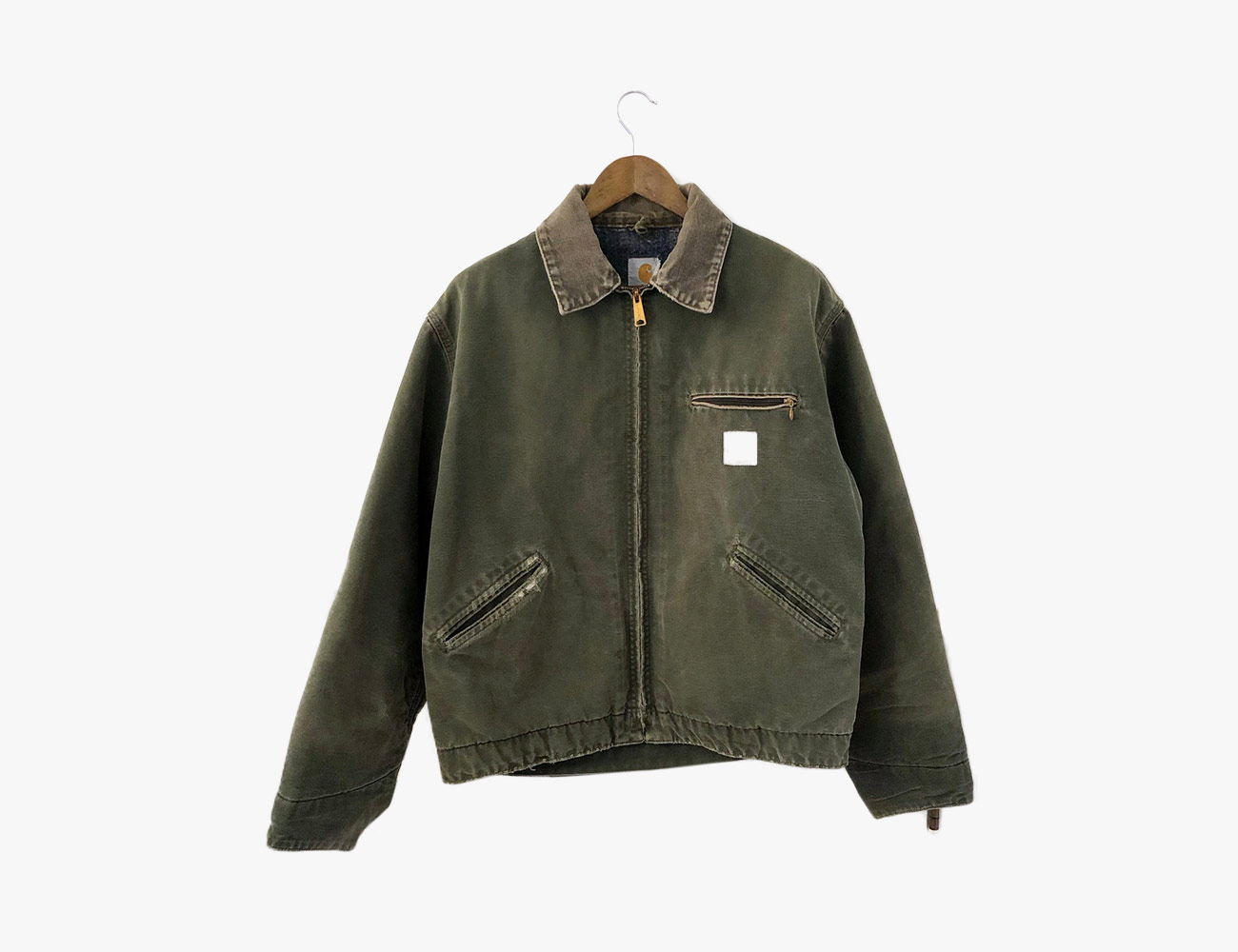The pantheon of workwear is divvied up between brands like Levi’s, Dickies and Ben Davis, comprising centuries of heritage. Among them stands Carhartt, claiming 130 years of tough garments. The brand started in 1889 and has churned out its share of durable icons throughout the last century.
While many know Carhartt for its chore coat, painters pants and hoodies, the Detroit Jacket is quitely popular and is firmly set as one of the brand’s classics.
First introduced in 1954, Carhartt’s Detroit Jacket is comparable to vintage Ricky jackets and garage jackets. It has two hand pockets, a zip-up front, a pointed collar and adjusters at the waist. Though one of its most recognizable features is its hardy 12-ounce cotton duck canvas, it was originally introduced in denim.
“We actually didn’t call it the Detroit Jacket until 1998,” explains Carhartt Archivist Dave More. “It was just known as the ‘Zipper Jacket’ for many, many years. Early on, it was one of the only jackets in our product offering that had a zipper.” Before the style got its modern moniker, it was described as an Eisenhower-style jacket, after the woolen military jacket sported by President Dwight D. Eisenhower. That design featured a short length, two flap pockets, a storm placket with hidden buttons, a notch lapel and epaulets. If you’re counting, the similarities are few. Other than the short length, Carhartt’s jacket bears little resemblance.


For a jacket that was first marketed toward construction workers, the lack of pockets may be a headscratcher. But the key to its functional design is the shorter length, which sits just above a worker’s toolbelt. The stripped-down style also helps the jacket translate outside of the job site.
“It has a simple, authentic style and fabric that appeals to a wide range of people,” says Deb Ferraro, vice president of product development at Carhartt. “It’s an easy go-to jacket that can work from the job site to weekend adventures.” Alongside the basic utility, the tough duck canvas has garnered fans for its ability to age and develop a beautiful patina — well-worn and faded vintage pieces often fetch more money than box-fresh versions. “The fabric and color were intentionally developed to get that worn-in look with age,” Ferraro says. “Today, we have softened the fabric, but didn’t take any of the durability out of it, and we wash the jacket before it leaves the factory to give it a more comfortable feel.”
The Detroit Jacket was catapulted from the construction site to the limelight when young hip-hop musicians took an interest in the style. It was donned by the likes of DJ and hip-hop producer Prince Paul before Kanye West adopted it into his wardrobe. Tommy Boy Records, which is credited for launching the careers of artists like Queen Latifah and De La Soul, even used the jacket as a promotional piece, embroidering its logo onto it and distributing it amongst tastemakers to great success. Today, original Tommy Boy Records Detroit Jackets can cost well over $1,000.
Photo via The Wall Street Journal
Photo by all_originals via eBay & via Vice
While coveted Japanese labels like Neighborhood and Bape have collaborated with Carhartt on the Detroit Jacket, many others — including Fear of God and Ralph Lauren — have looked to it for inspiration.
The Detroit Jacket reached an even greater audience when it was featured prominently throughout Christopher Nolan’s space epic Interstellar. When approaching the film, lead costume designer Mary Zophres looked to the jacket for its enduring design. “It should be completely timeless,” she says. “Even though we’re 50 years in the future, we’re not trying to predict how clothes are gonna look… We wanted a certain level of age and classic styling.”
Photo via Paramount
The Detroit Jacket’s iconic design got its first real update in decades in the fall of 2019. “We’re constantly out in the field talking to people, interviewing our Carhartt Crew about our products and reviewing any feedback we receive,” says Ferraro. The 2.0 version adds extra length in the body as well a drop tail for better coverage. It also bumps up the comfort, with a softer blanket lining and a washed-down duck canvas in place of the rigid duck decades of Carhartt diehards have known. But, for a brand that seemed to have caught lightning in a bottle back in 1954, the choice to change the formula wasn’t taken lightly. “We’re constantly rethinking things and making sure as times change, we’re still serving the consumer,” says Moore. “We’re not gonna not listen to them just because something’s been around for so long.”
The first significant design change since its inception will undoubtedly have some longtime fans upset. But like the Converse Chuck Taylor, the Levi’s 501 and a handful of other iconic, time-tested garments, this legendary piece will continue to live on, and, like its fabric, will continue to get better.






